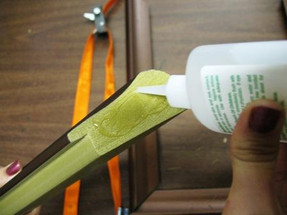Posted by Lynn Unrath on 23rd Jul 2018
Polystyrene Framing vs Wood Framing
Wood is the traditional material used to frame photos, paintings and the like, and has been so for centuries. Wood has its advantages of course. It tends to be strong, durable, and long lasting. Wood has its disadvantages as well. A strong competitor for the wood frame in today's marketplace is the polystyrene frame. For one thing, choosing a polystyrene frame is often the most cost efficient approach, but there are other advantages polystyrene brings to the table a well.
For years, the terms polystyrene and cheap plastic seemed to by synonymous when picture frames was the subject under discussion. This is definitely no longer the case. Frames can still feature a plastic look, but there are also polystyrene frame that look like, wood, bamboo, metal, or practically any other material you can think of.
If a polystyrene frame resembles a wood frame so closely that you cannot tell them apart, your best choice will in most cases be the frame constructed of polystyrene. The appearance, for all practical purposes, will be the same, but the cost savings can often be significant. It is the same for metal. Metal frames can at times be quite expensive, especially when a custom size or shape is needed. This is not the case with polystyrene, where shape or size is usually not a major issue.
It is not just the faux finish that makes a difference. A custom wooden frame featuring beads or embossed pattern will be expensive. Even standard patterned wooden frames tend to cost more. The tooling needed to produce a custom polystyrene frame is often already in place. Polystyrene comes out hot during the production process, so it is easy to mold and manipulate when the right tool is at hand. In years past, plastic was too brittle to work with, giving wood a definite advantage. This is no longer the case. Polystyrene frames are much stronger than people tend to think. polystyrene frames are much lighter than wooden frames, leading some to believe that they are not sturdy.
polystyrene is becoming more and more the framing material of choice for contract framers who bid on large jobs. When a job calls for multiple pieces, such as providing framed pictures for a hotel or other large institution, it is easier for the framer to deliver a product that fits nicely into the client's budget, while still turning a profit.
Insofar as individual frames are concerned, if you have a van Gogh you wish to have reframed, selecting a nice wooden frame costing a few hundred dollars would make sense. On the other hand, if you have a poster that will add to your living room decor, buying a frame that costs more than the poster would make little sense, whereas a polystyrene frame might make the most sense of all. The size of the poster will normally be of little concern, unless it is to be placed behind glass. polystyrene is strong enough in most cases, but if the picture or poster is quite large, acrylic is a good substitute for glass.

